EASYTRANSFER LIBRARY MAKES ARDUINO2ARDUINO COMMUNICATION EASY
– June 2nd, 2011
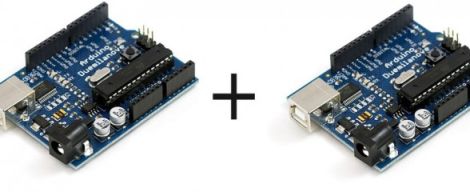
Making an Arduino communicating with another Arduino implies the use of a protocol. Most of the time is a DIY protocol that suits your needs (e.g. sending simple bytes/string etc) made for that project.
[Bill Porter] took care of this problem by creating a library called EasyTransfer
In most of my own projects I define and write my own NMEA standard communication protocols. This makes communications human readable and easy to debug, but proves wasteful with bandwidth and processing power so it’s not right for every application. Binary communications is much more efficient and versatile, but requires careful handling. This library abstracts the finer points of packetized serial communication away from the user so it easy to use and understand.
via [HackADay] source [BillPorter]
ARDUINOCAMP A MILANO, 18-19 GIUGNO!
– June 1st, 2011
Arduino e Innovation Festival presentano a tutti gli appassionati un evento da non perdere: il 18-19 giugno si terrà a Milano, presso la ArtAndGallery, l’Arduino Camp.
Il camp sarà una buona occasione di dialogo sul presente di Arduino e sul suo futuro. La comunità gioca un ruolo centrale nell’evento: il sabato parteciperà (scegliendo due dei quattro temi) alle discussioni, la domenica potrà seguire o partecipare attivamente all’HackDay.
TUTORIAL: ARDUINO UNO + GOOGLE’S ADK
– May 30th, 2011
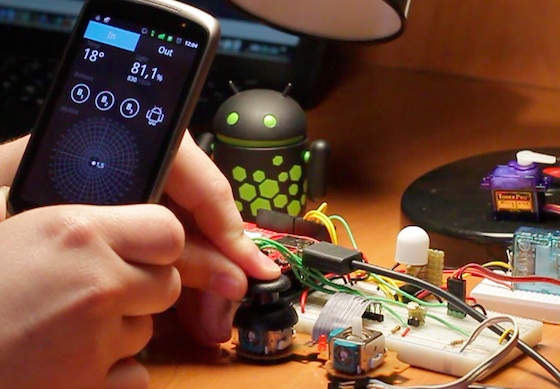
[Alex TC] from [Bricogeek] posted a tutorial about how to interface Arduino and Android replacing the ADK shield by Google with commonc sensors and actuators.
[few days ago] ADK was presented on Google’s blog, a platform that enables communication between Android and Arduino. The downside was that the development kit costs around 300 €.Today we bring you a scoop. After seeing different people online who managed to run the ADK on Arduino with a USB Host Shield controlling a servo or LED, we intend to play all the devices included in the kit but in our BricoGeek DIY version, with the products we have available in the store.
via [bricogeek]
BIG FONTS ON LCD LIBRARY TURNS TO SECOND VERSION
– May 27th, 2011
When working on 20×4 (or bigger) lcds font dimension can become an interesting issue: [liudr] shared & updated its Phi_Big_Font library
The Phi_big_font library utilizes 3 X 5 dot matrix technique I developed to display characters 6 times the size of ordinary characters seen on HD44780-compatible character LCDs. You will need two rows and 4 columns to display one character (with one column blank to separate characters). A 16*2 display can display 4 such characters, making a perfect clock display like HH:MM, or month or day display in three characters. A 20*4 display can display 5 characters by two rows, totally 10. You can display the characters anywhere you want. Make an animation if you want.
via [Arduino Forum] source [liudr blog]
YAHOO FARM FROM ROBOFUN GUYS (AT YAHOO OPEN HACK 2011)
– May 26th, 2011
[Viorel] wrote me about an interesting project he and his friends from Robofun developed during the 2011 Yahoo Open Hack in Bucharest, and won the Hacker’s Choice Award. The diorama becomes a physical representation of tour friends’ behaviours.
If you’re a both nature lover and a geek, you would certainly love the Yahoo Farm. The Yahoo Farm is a 60 cm wide diorama, sitting in your bedroom and bringing you online data from the Yahoo ecosystem.For example, the wind mill rotation below is directly controlled by the wind speed outside (being connected to the Yahoo Weather API), the hand-painted backgrounds are switched according to the weather state, a new sheep is coming out of the barn each time one of your friends gets online on Yahoo Messenger, and each new email lights up a fruit in the Email Tree.
Give a look at the presentation used for the 90 seconds pitch during the event.
via [Technorama.ro]
ARDUINO CONTROLLED DISHWASHER
– May 26th, 2011
Arduino Forum User [UnaClocker] shared a cool hack on its Maytag dishwasher:
The control panel on the front of it died, it failed from corrosion getting into the laminated plastic PCB that it’s made up of. Not really repairable, just meant to be replaced, except that it’s a $150 part. From what I could find online, it seems to be a common failure, so why buy an overpriced part that’s just going to fail all over again?This is one of the things I love about the Arduino, it allows me to consider alternatives that I’d have NEVER been able to consider before. If I had to program a controller in assembly, or flat do it with just discrete chips, I’d have never considered this as an option. But with the Arduino, not only can I build my own controller, but it’s almost stupidly simple to do.
via [Arduino Forum] source [NeonSquirt] with Code!
MASSIMO’S TALK @ TETALAB [TOULOUSE] NEXT WEEK-END
– May 25th, 2011
I’m happy to announce Massimo’s participation to an interesting event going on in Toulouse (France) next week.end (May the 27-28-29)
Conferences, workshops, concerts and performances!!
There will be about 10 different talks on subjects as various as DIY, legal hacking, alternative social networks and other weird topics… But not only! You’re invited to workshops where you can build, hack, tinker with your own creations and learn stuff too! Lecturers are coming from all over France, but also from Italy and Spain.
Artistic performances, video mapping, installations and concerts: all the ingredients for a tasty artistic hacking jam!
Give a look at the schedule of the event.
Via [Tetalab], Free and organized by Mix’art Myrys (famous and historic artistic venue) and Tetalab (Toulouse based hackerspace)
SHARE REMIX REUSE – LEGALLY. LA CITTÀ DIGITALE CHE VOGLIAMO.
– May 25th, 2011
(questo) venerdì 27 maggio 2011 il Fablab alle OGR di Torino presenta un interessante conferenza sul CC.
si parlerà, rivoluzione digitale e condivisione di informazioni e futuro della città di Torino. Interpretando un crescente interesse da parte della società e di numerosi giovani creativi riguardo queste tematiche avremo nostri ospiti Juan Carlos De Martin, Fosca Nomis e Vittorio Bertola che ci parleranno di Creative Commons e di Torino Digitale, il progetto che vuole fare di Torino “la prima città italiana al passo con l’Agenda Digitale europea”.
Se siete a Torino fate un salto (costo entrata – alla mostra – 10 EUR). Per iscriverti clicca qui.
via [FablabItalia]
ARDUINO STORE OPENS
– May 23rd, 2011
As you’ve probably noticed, we are proud to announce the long-awaited opening of the Arduino Store. Give yourself a look here.
MTM SNAP: A SNAP-TOGETHER ARDUINO-POWERED DESKTOP CNC MILLING MACHINE.
– May 20th, 2011
Jonathan Ward from the MIT Center for Bits and Atoms has designed a snap-together, desktop-sized CNC milling machine. The MTM Snap (part of theMachines that Make project) is made from 1/2-inch high-density polyethylene (HDPE) – itself milled on a ShopBot – and can be assembled for about $700. This three-axis CNC machine can mill circuit boards, wax molds, and harder materials in a 5x3x1.75″ working area.
The MTM Snap is controlled by an Arduino board running grbl, a full-featured and robust g-code interpreter. A custom shield (designed by Nadya Peek) with three Allegro A3982 chips drives the machine’s stepper motors, and the whole thing is controlled from a simple GUI written in Processing. The advantage of this setup is that you can use the machine from pretty much any computer: desktop or laptop, Mac, Windows, or Linux. We use the CBA’s Kokompe tools for generating g-code files, but grbl should handle most files from other sources (like PCB-GCode).
You can’t yet buy the MTM Snap, but the machine has been designed to be as easy as possible to assemble yourself. All the design files are online if you want to cut out your own pieces on the ShopBot. The complete bill of materials is available, as are the documentation for the Arduino shield and software instructions.
If you’d like to see the MTM Snap in person, drop by the ShopBot booth at the Bay Area Maker Faire this weekend. It will be running off of an OLPC laptop.



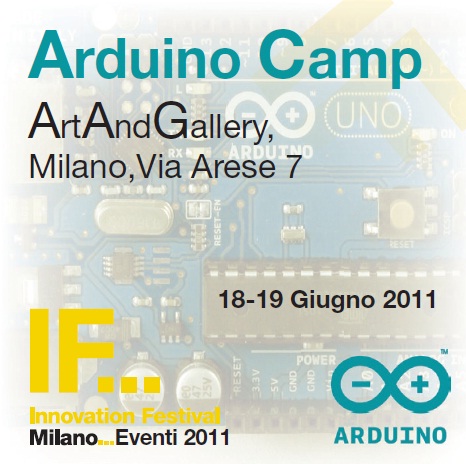


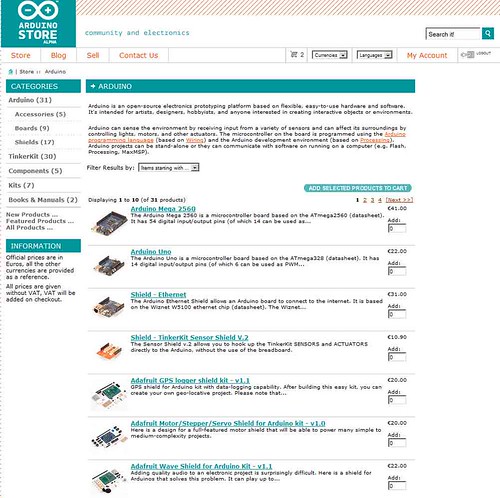

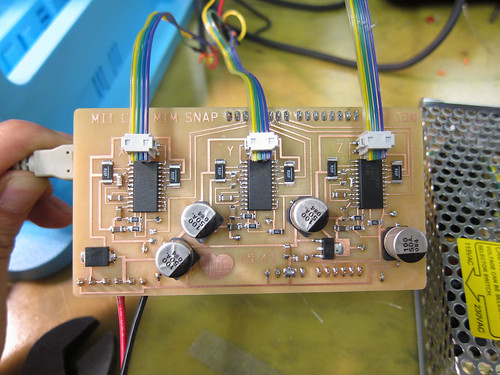






0 comentarios:
Publicar un comentario